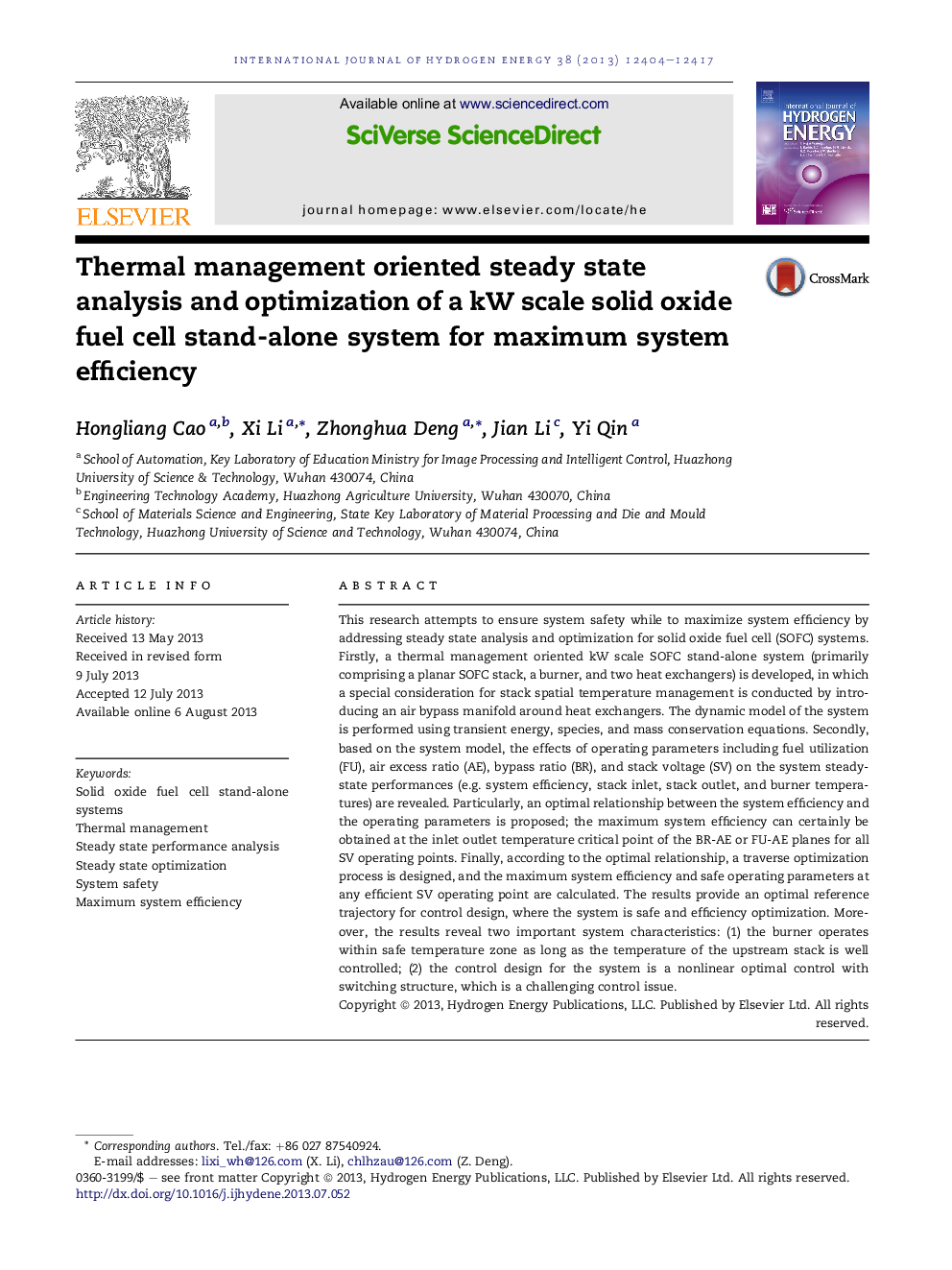| Article ID | Journal | Published Year | Pages | File Type |
|---|---|---|---|---|
| 1281470 | International Journal of Hydrogen Energy | 2013 | 14 Pages |
:•A thermal management oriented kW scale SOFC stand-alone system is developed.•The steady state analysis and optimization of the system are conducted.•Optimal relationship between system efficiency and operating parameters is proposed.•Optimal operating points obtained is temperature safety and efficiency maximization.
This research attempts to ensure system safety while to maximize system efficiency by addressing steady state analysis and optimization for solid oxide fuel cell (SOFC) systems. Firstly, a thermal management oriented kW scale SOFC stand-alone system (primarily comprising a planar SOFC stack, a burner, and two heat exchangers) is developed, in which a special consideration for stack spatial temperature management is conducted by introducing an air bypass manifold around heat exchangers. The dynamic model of the system is performed using transient energy, species, and mass conservation equations. Secondly, based on the system model, the effects of operating parameters including fuel utilization (FU), air excess ratio (AE), bypass ratio (BR), and stack voltage (SV) on the system steady-state performances (e.g. system efficiency, stack inlet, stack outlet, and burner temperatures) are revealed. Particularly, an optimal relationship between the system efficiency and the operating parameters is proposed; the maximum system efficiency can certainly be obtained at the inlet outlet temperature critical point of the BR-AE or FU-AE planes for all SV operating points. Finally, according to the optimal relationship, a traverse optimization process is designed, and the maximum system efficiency and safe operating parameters at any efficient SV operating point are calculated. The results provide an optimal reference trajectory for control design, where the system is safe and efficiency optimization. Moreover, the results reveal two important system characteristics: (1) the burner operates within safe temperature zone as long as the temperature of the upstream stack is well controlled; (2) the control design for the system is a nonlinear optimal control with switching structure, which is a challenging control issue.
